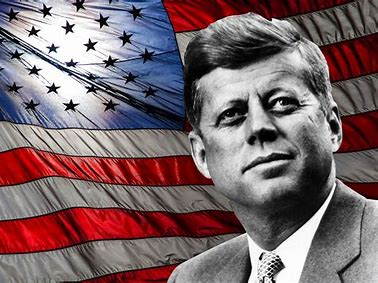Gramps and Older Americans Month
May 1, 2024 at 2:50 p.m.
As publisher of a senior newspaper, I know that every May I will be contemplating Older Americans Month. I've done this year in, year out for nearly 25 years.
When Older Americans Month was established in May 1963, about a third of people over age 65 lived in poverty and there were few programs to meet their needs. Things started to slowly change after a meeting in April 1963 between President John F. Kennedy and members of the National Council of Senior Citizens. They designated May as "Senior Citizens Month." President Kennedy asked the entire nation to pay tribute in some way to older people, not only in their own families but throughout their communities.
This tribute to seniors was formalized in 1965 when the Older Americans Act was passed by President Lyndon B. Johnson.
The Older Americans Act (OAA) made available new programs, financial assistance and federal support to seniors. The Act established the Administration on Aging, introduced nutrition programs and transportation assistance, adult day care and legal aid aimed at older adults. Senior Centers began popping up all over the country. OAA also paved the way to passing Medicare.
In other words, the Older Americans Act was, and remains, a big deal.
In an earlier blog, I talked about how the passage of OAA directly affected my extended family. I was still a teenager at the time, but vividly remember those days.
Back in the late 1960s and early '70s, senior power took root. My grandfather, Gramps (Clarence Howard Roedell, Sr.), was front and center as part of that movement in Seattle.
Gramps and other older adults across the nation proudly wore buttons declaring themselves to be a “Senior Citizen.” These buttons were meant to demand respect and proclaim to the world that they were still relevant. Seattle Mayor West Uhlman created a Division on Aging (now the Area Agency on Aging for Seattle and King County), one of the first cities in the country to do so. He urged local senior citizens to flex their political muscles and show “a united front of senior power.”
From that day forward, my grandfather took the chance to flex his political muscles as a proud senior citizen whenever the chance arose.
Years later, while attending some senior event or another, I ran into the well-known politician, Dwight Pelz. We were all wearing name tags, and he asked if I was related to Clarence Howard Roedell, Sr. This was long after my grandfather had passed away, but Gramps had made such an impression on Dwight that he still referred to him by name and with a big smile on his face. My grandfather had that affect on people. Dwight took the time to remind me, with admiration in his voice, of what a big difference my grandfather and other senior activists had made back in the day. He was a trailblazer.
Thanks, Gramps.
In 1963, when President Kennedy asked the nation to pay tribute to older adults, only 17 million Americans reached their 65th birthday. According to the U.S. Census, this demographic reached 55.8 million in 2020, when one of every six Americans were 65 and older.
I wonder what Gramps, or President Kennedy, would think about that!

The 2024 Older Americans Month theme is "Powered by Connection," which recognizes the profound impact that meaningful relationships and social connections have on our health and well-being. For more information, visit https://acl.gov/oam/2024/older-americans-month-2024





